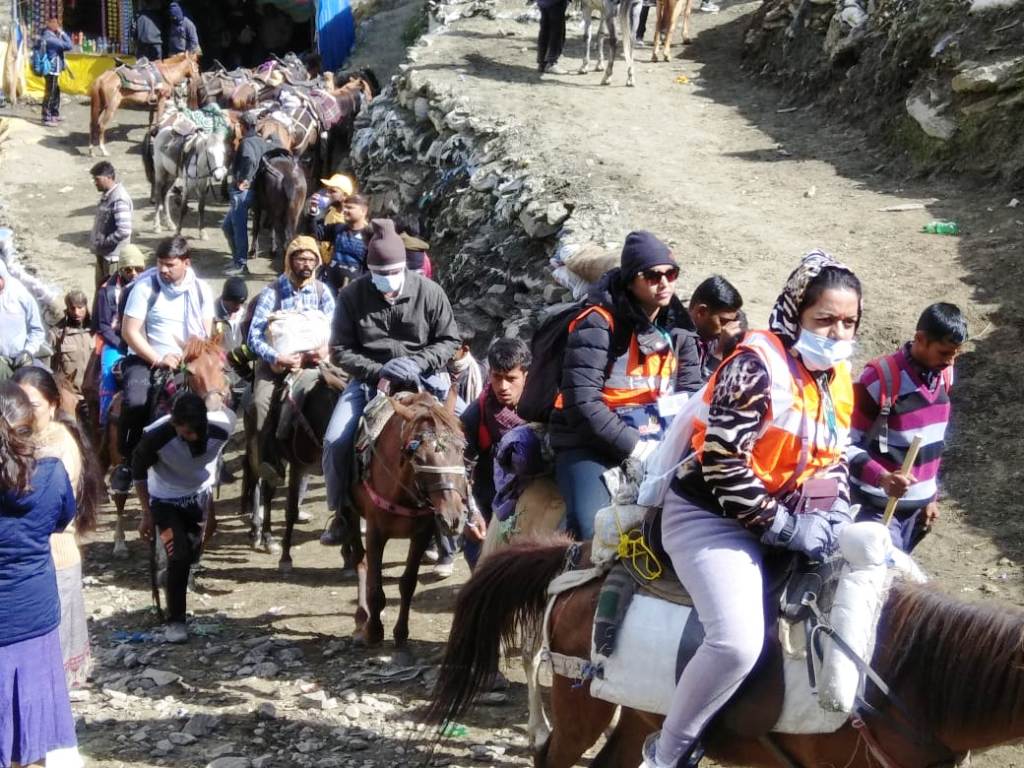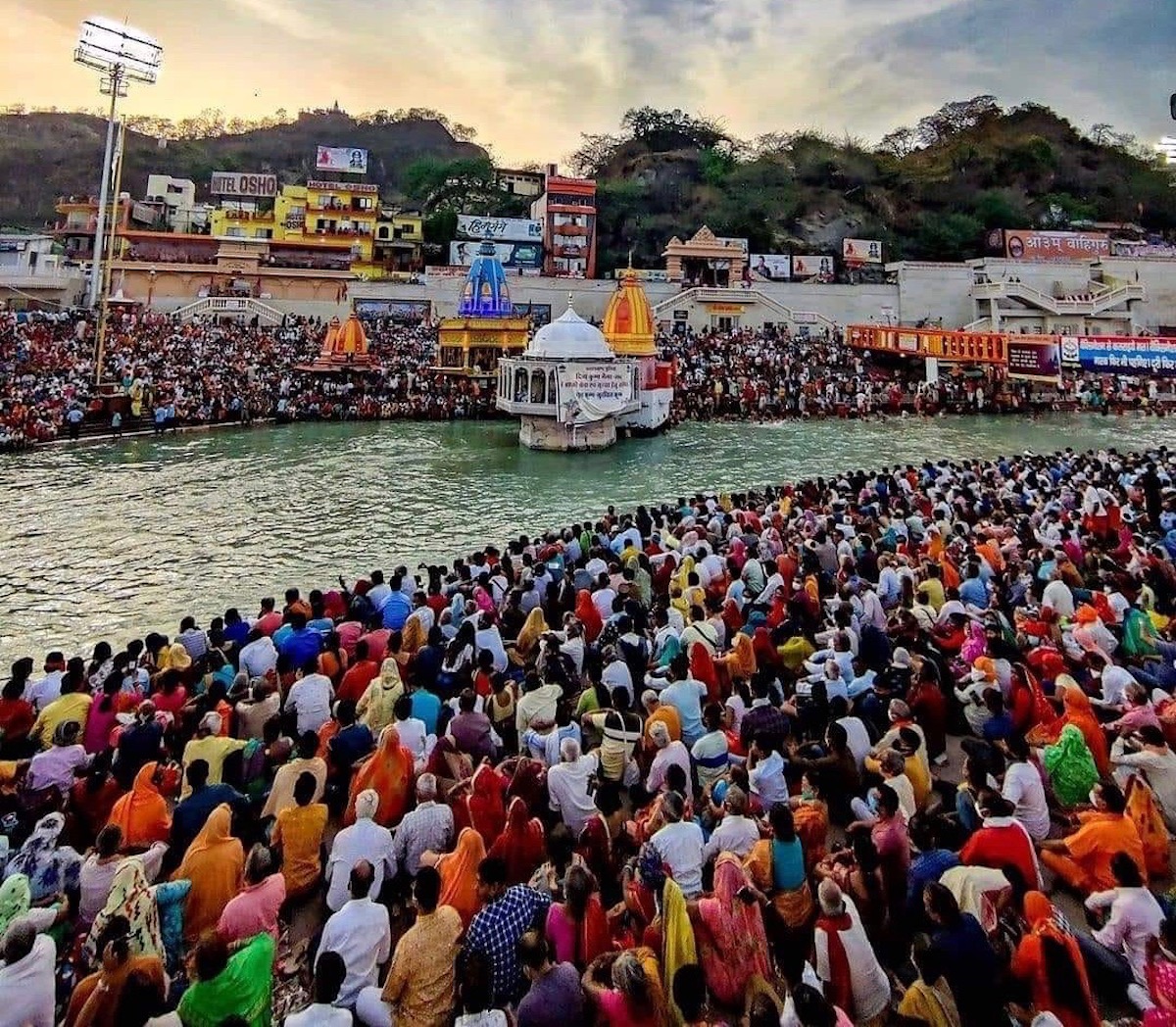Amarnath pilgrimage could undo the painstaking efforts to control the virus in Kashmir, writes Riyaz Wani

With the annual Amarnath yatra drawing near, the Jammu and Kashmir administration is yet to take a final call on whether the pilgrimage will go ahead or not. Earlier in April, the administration suspended the registrations of pilgrims in view of the sudden outbreak of the second Covid-19 wave, which soon overwhelmed the country. Now, with the infections plunging sharply across India and also within Jammu and Kashmir, the government seems to be toying with the idea to let the pilgrimage go ahead. But the prospect is fraught with risk.
Last week, home minister Amit Shah held a meeting with Lt Governor Manoj Sinha. The meeting was also attended by the outgoing Jammu and Kashmir Chief Secretary, BVR Subrahmanyam, his successor Dr Arun K Mehta, Intelligence Bureau (IB) Chief, Arvind Kumar, Director General of Police (DGP) Dilbag Singh and ADG, J&K Police CID.
Yatra was supposed to be one of the top points of discussion.
A Visible Unease
This has generated some unease in Kashmir where people apprehend that the yatra will lead to a fresh surge in the cases of Coronavirus. Moreso, as it could spread the virulent Covid-19 strain to Kashmir too. The variant wrought havoc across India leading to an exponential rise in infections. Though the caseload has currently been contained to a large extent, it is yet to be reined in. The cases in Kashmir are also not under control, hovering still around one thousand, the peak of last year, with the Valley witnessing the major chunk of them.

So, an Amarnath scale yatra may disrupt the painstaking efforts to control the virus. In the run-up to Kumbh mela also health experts had warned the government that a new and more contagious variant of the Coronavirus was taking hold in the country and “letting millions of largely unmasked people gather for a festival was not prudent”. But the government went ahead nevertheless. According to Lancet, over 9 million pilgrims voluntarily visited Kumbh between January and March 2021.
“The maximum number of people visiting the Kumbh area on a single day was 3.5 million. On that day of peak footfall, the population density in the Kumbh area was estimated as nearly 23,000 people per sq km,” the Lancet editorial said.
It is these people when they went back to their places that the second wave spread, leaving thousands of people dead.
Risky Decision
Under these circumstances, allowing the Amarnath Yatra to go ahead looks odd and also, in a sense, discriminatory when the same administration had chosen to bar the religious gatherings in Kashmir. During the yatra, the pilgrims from all across India would visit Jammu and Kashmir. They would travel hundreds of kilometres through the country to reach their destination. So, letting the pilgrimage take place in the middle of a pandemic with the second Covid wave still largely intact is an ill-advised move. It is therefore necessary that better counsel prevails and the government understands the risks involved.

People in Kashmir are citing the cancellation of other pilgrimages in other parts of the country due to the pandemic and wondering why Jammu and Kashmir government would want to go ahead with holding Amarnath pilgrimage.
The Odisha government has banned Rath Yatra. The yatra will not be held at the famous Baladevjew temple at Kendrapara, popularly known as Tulasi Khetra, for the second consecutive year. The 9-day festival was also cancelled last year. Similarly, the Kailash Mansarovar and Adi Kailash Yatra will, in all possibility, be cancelled this year for the second year.
There is thus a chorus of voices in Kashmir calling for the cancellation of the Amarnath yatra to ensure that there is no fresh spike in infections, both among yatris and the host people. And considering the fragile state of our health infrastructure, an infection overload would be too much to accommodate.
The Political Class
The political parties in Kashmir have sought to nix the yatra. PDP president Mehbooba Mufti recently said the will of the people of Jammu and Kashmir hardly matters as all decisions are made by the union government. On the other hand, the parties like the Congress and the BJP are in favour of going ahead with the yatra for a few days with all necessary precautions.

Even the state BJP has batted for a limited yatra. “Shiv devotees from across the globe visit Amarnath every year for darshan (glimpse) during June and July in Kashmir.” said the BJP president Ravinder Raina in an interview to a local news-gatherer. “Because of the Coronavirus pandemic, big religious gatherings are not happening in any part of the world so at least a restricted yatra should be facilitated.”
Such criticism and suggestions have limited the government’s options. The media reports have said that the opinion even in the Shri Amarnath Ji Shrine Board (SASB) is veering towards cancellation of the yatra. The board could still hold the traditional rituals in the presence of Sadhus at the cave shrine without any interruption like it did last year.
Similarly, the board is also expected to continue the live telecast and virtual darshan of the morning and evening Aarti from the holy cave shrine. And hopefully, the next year, when India is expected to be fully vaccinated, the pilgrimage could go ahead normally.















